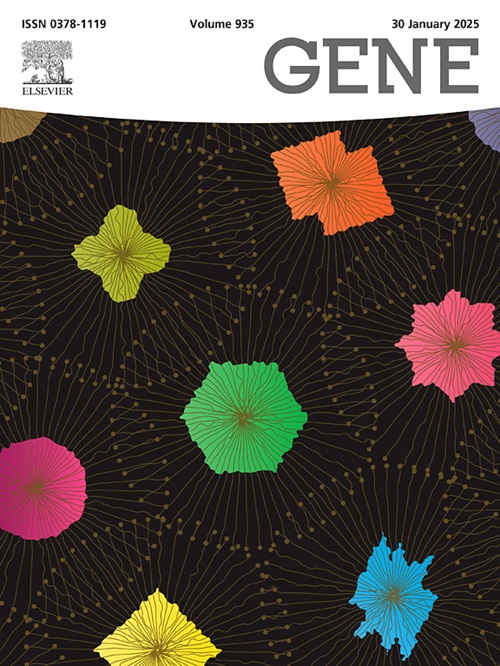Effect of glucose supplementation on protein biosynthesis in chickens reared under thermoneutral or heat stress environment
IF 2.6
3区 生物学
Q2 GENETICS & HEREDITY
引用次数: 0
Abstract
Heat stress (HS) impacts broilers by reducing feed intake which impairs nutrient availability and energy levels, subsequently affecting protein biosynthesis. We hypothesize that an exogenous supply of glucose could provide extra energy resources that enhance protein biosynthesis in broilers reared under HS. Our experimental design involved two levels of temperature (25 °C [thermoneutral, TN]); 35 °C (8.00 AM to 8.00 PM, [Heat Stress, HS]), and two glucose levels (0 % and 6 %). We randomly assigned a total of 456 four-week-old Cobb500 broilers to four different treatment groups (TN0, TN6, HS0, and HS6), respectively. After 7 days post-HS, we observed an inverse relationship between the avian target of rapamycin (avTOR) and autophagy-related genes. The phosphorylation of mTOR and S6K1 at Ser2448 and Thr421/Ser424 respectively was higher (p < 0.05) in the TN0 group than in the HS groups. Additionally, the phosphorylation of Foxo3a at Ser253 was higher (p < 0.05) in the HS0 group than in the HS6 groups, indicating an adaptive response to HS. Thus, the combined effect of HS and glucose could influence the phosphorylation status of key signaling genes in the mTOR pathway. The expression levels of mRNA genes in the mTOR pathway were more pronounced (p < 0.05) in HS6 birds than in HS0 birds except for avTOR, Akt1, and S6K1.
补充葡萄糖对中温或热应激环境下饲养的鸡蛋白质生物合成的影响
热应激对肉仔鸡的影响是减少采食量,损害营养物质利用率和能量水平,进而影响蛋白质的生物合成。我们假设,外源葡萄糖供应可以提供额外的能量资源,促进HS饲养的肉鸡蛋白质的生物合成。我们的实验设计涉及两个温度水平(25 °C[热中性,TN]);35 °C(上午8点至晚上8点,[热应力,HS])和两个葡萄糖水平(0 %和6 %)。试验将456只4周龄Cobb500肉鸡随机分为4个不同处理组(TN0、TN6、HS0和HS6)。在hs后7 天,我们观察到禽雷帕霉素靶蛋白(avTOR)与自噬相关基因呈负相关。mTOR和S6K1在Ser2448和Thr421/Ser424位点的磷酸化分别高于HS组(p 0组)。此外,Foxo3a Ser253位点的磷酸化水平高于HS6组(p 0),表明对HS有适应性反应。因此,HS和葡萄糖的联合作用可以影响mTOR通路中关键信号基因的磷酸化状态。除avTOR、Akt1和S6K1外,mTOR通路mRNA基因的表达水平在HS0中更为显著(p 6)。
本文章由计算机程序翻译,如有差异,请以英文原文为准。
求助全文
约1分钟内获得全文
求助全文
来源期刊

Gene
生物-遗传学
CiteScore
6.10
自引率
2.90%
发文量
718
审稿时长
42 days
期刊介绍:
Gene publishes papers that focus on the regulation, expression, function and evolution of genes in all biological contexts, including all prokaryotic and eukaryotic organisms, as well as viruses.
 求助内容:
求助内容: 应助结果提醒方式:
应助结果提醒方式:


